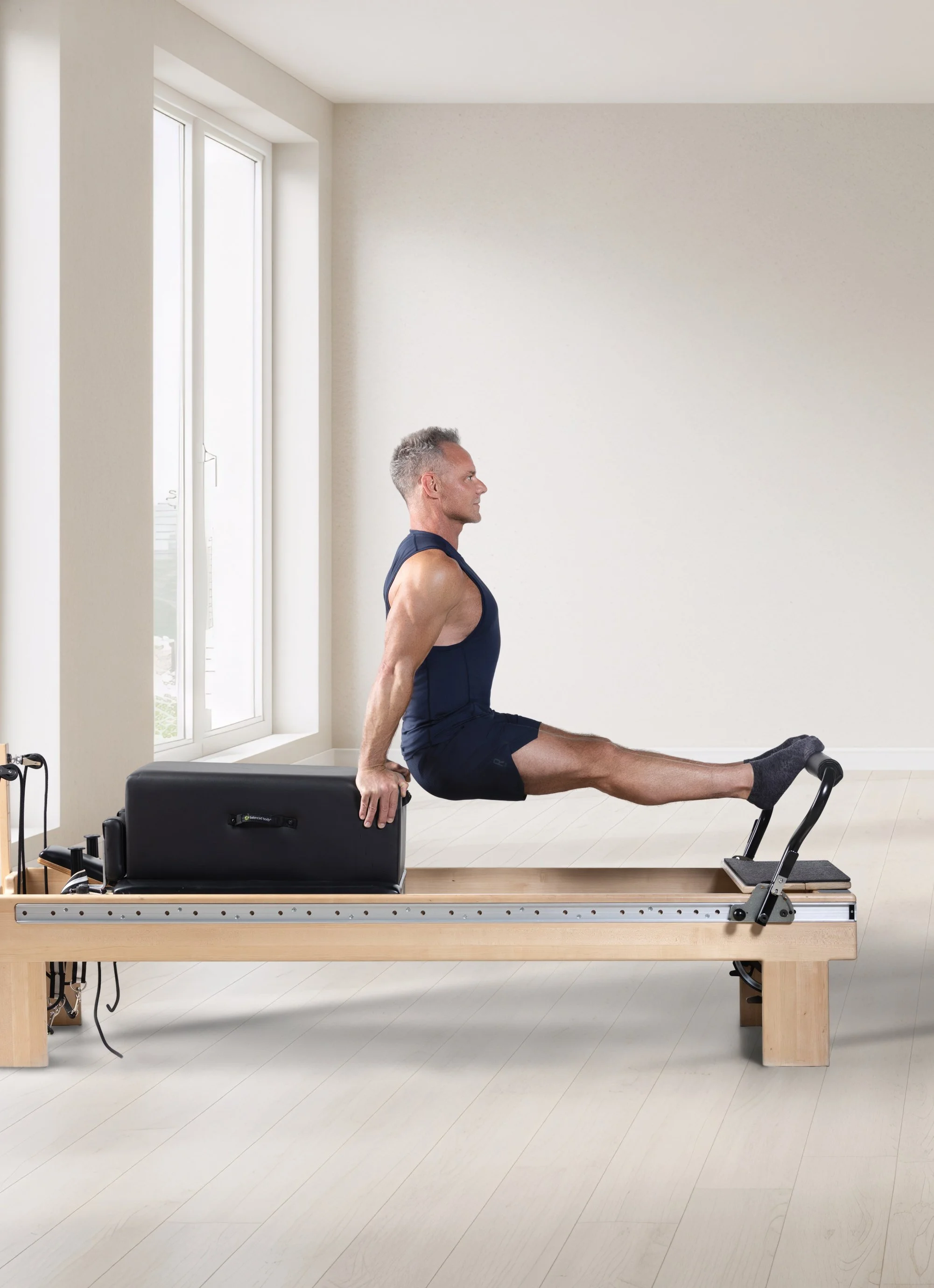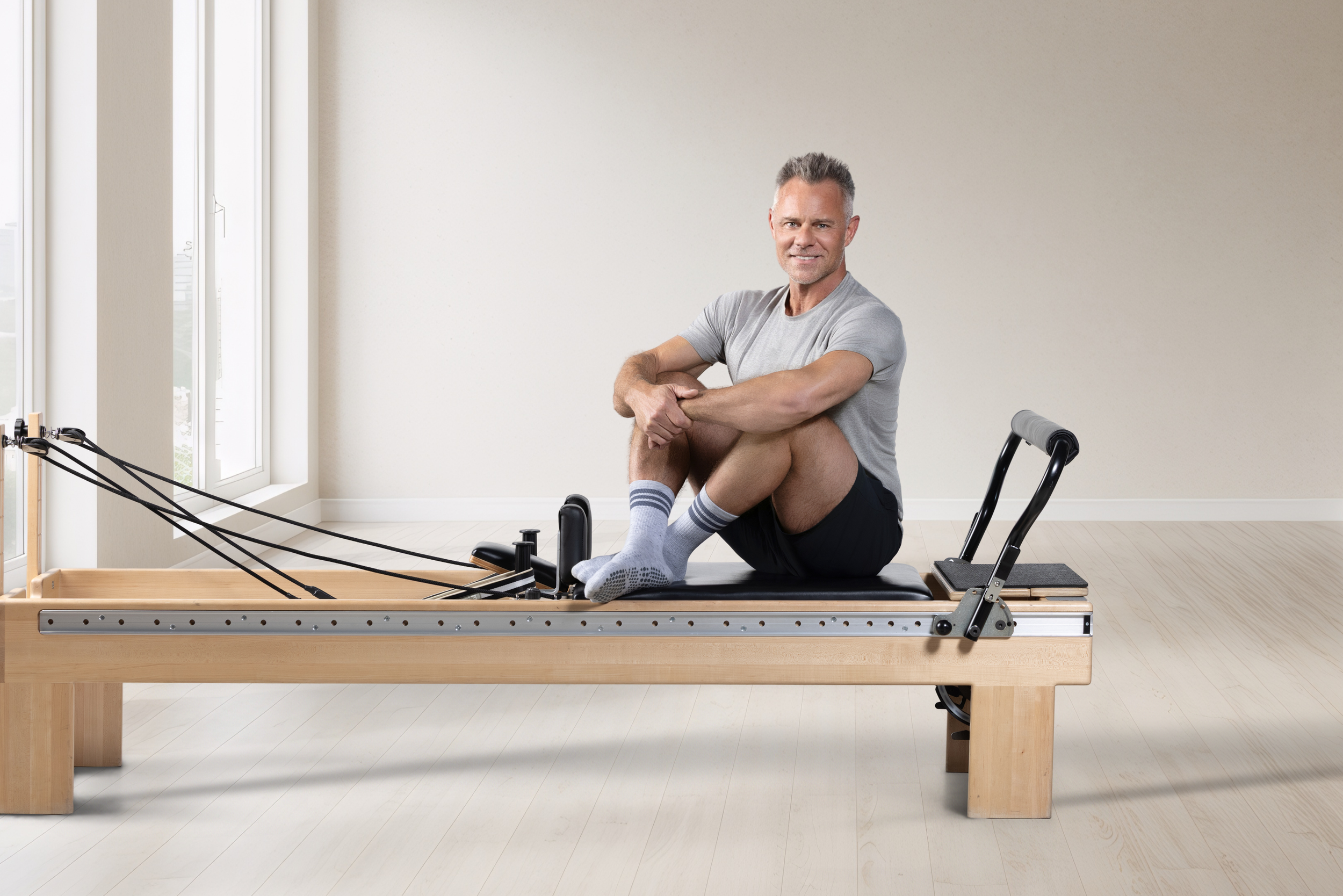Teaching Strength with Strategy
This January, at The Pilates Journal Expo USA in Huntington Beach, Sean will present his evolving approach to strength and strategy in Pilates.
Before Sean Bergara became a Pilates teacher, he was a personal trainer focused on strength and performance. He didn’t plan to change careers. In fact, when he first encountered Pilates, it was simply to better understand the method and improve his own movement. But a skiing accident, lingering pain, and a powerful experience with Pilates-based rehabilitation shifted everything.
“The changes I felt in my own body were undeniable,” Sean recalls. “My strength improved, the pain started to fade, and I began to move better, not just in the studio, but in my life.” Though he once told friends he didn’t want to become a Pilates instructor, the pull became impossible to ignore.
That turning point sparked a commitment not just to practice Pilates, but to teach it with purpose and depth.
A Method Rooted in Mechanics
Sean’s teaching philosophy centers around one core idea: understand the origin of movement. “It’s not about running people through a workout,” he says. “It’s about teaching them why they’re moving the way they are so they can apply that knowledge in their daily life.”
“I equip my students with a solid understanding of joint mechanics, rather than merely instructing them on exercises. This foundational knowledge empowers them to incorporate healthy movement patterns into their everyday lives and activities.”
Sean also spends a portion of time breaking down a single movement. Whether it’s a beginner class or an all-levels session, he ensures that foundational mechanics are explored, taught, and understood. “Even students coming from other studios walk away with something new to think about,” he explains.
For Sean, it’s about more than sequences it’s about changing how people move through the world. That commitment extends into the way he designs his classes and supports every type of student.
What Today’s Students Really Need
Making Pilates accessible for all levels is another defining feature in Sean’s approach. He encourages students to listen to their energy and adapt accordingly. “Some days they’re tired, and I let them take it easy. Other days they push harder. It’s about empowering choice, not enforcing performance.”
That flexibility, he says, is what keeps people coming back. “They know they can show up exactly as they are, and still leave feeling stronger and more connected.”
This student-centered mindset is also what fuels one of Sean’s core beliefs about what it means to truly teach. In his view, effective Pilates education comes down to individualized attention and adaptable programming. “You have to look at who’s in front of you,” he says. “A good teacher modifies not just for the body, but for the person.”
He draws a parallel to ski instruction: “You wouldn’t throw someone down a black diamond run without teaching them the basics first. Why should movement be any different?”
This mindset respecting progressions, meeting students where they are, and building from the ground up is what Sean believes sets great teachers apart in an increasingly fast-paced fitness landscape.
It’s a perspective he’ll be bringing to his upcoming session at The Pilates Journal Expo USA.
Sean will be leading a session designed to highlight the differences between traditional Pilates and athletic reformer training. He’s particularly excited to share strategies for building strength on the reformer in a way that’s intentional, progressive, and rooted in healthy mechanics.
“It is common to observe ballistic movements that prioritize jumping and vigorous pushing and pulling, often neglecting the foundational principles of the Pilates method. My passion lies in enabling students to cultivate their strength at a comfortable pace while adhering to healthy movement principles,” said Sean.
Building Connection and Raising Standards
Looking ahead, Sean hopes to see more Pilates educators committed to ongoing learning not just through certifications, but through personal practice. “The more we grow as movers, the more we have to offer our students,” he says. “This industry thrives when teachers build real relationships not just deliver routines.”
“I believe it is essential for every teacher to invest time in helping students feel and comprehend the nuances of movement. Instead of delivering a standard choreographed class, we should adapt our sessions to provide a distinctive and enriching experience that fosters an understanding of healthy movement in each lesson,” he said.
He also hopes Pilates will continue evolving beyond rigid styles and fixed protocols. “I hope we can move beyond rigid teaching methodologies and find ways to transcend the dogmas that have constrained our field for many years. We’re in a shift right now,” he explains. “The future of Pilates maybe shaped by educators who embody curiosity, strategy, and connection, as well as those who teach authentically and passionately.”
Want to learn directly from Sean?
Sean will take the stage this January at The Pilates Journal Expo USA in Huntington Beach, sharing his expert take on athletic reformer training. Expect to be challenged, inspired, and equipped with smarter strategies for building strength through movement that matters.
In 2021, he took a leap, moving from Hobart to Melbourne during a lockdown. “It didn’t make logical sense,” he admits. “But I had a gut feeling and I wanted to prove my methods worked.”
Sean began his Pilates Journey back in 2005 after suffering a serious skiing accident in 1991. In 2007, he moved to Palm Springs in California and opened Ecore Fitness. Sean received his Pilates certification from Polestar Pilates. Sean teaches regular weekly group and private classes, offers continued education and training worldwide and has an on-demand website. Find out more here.


